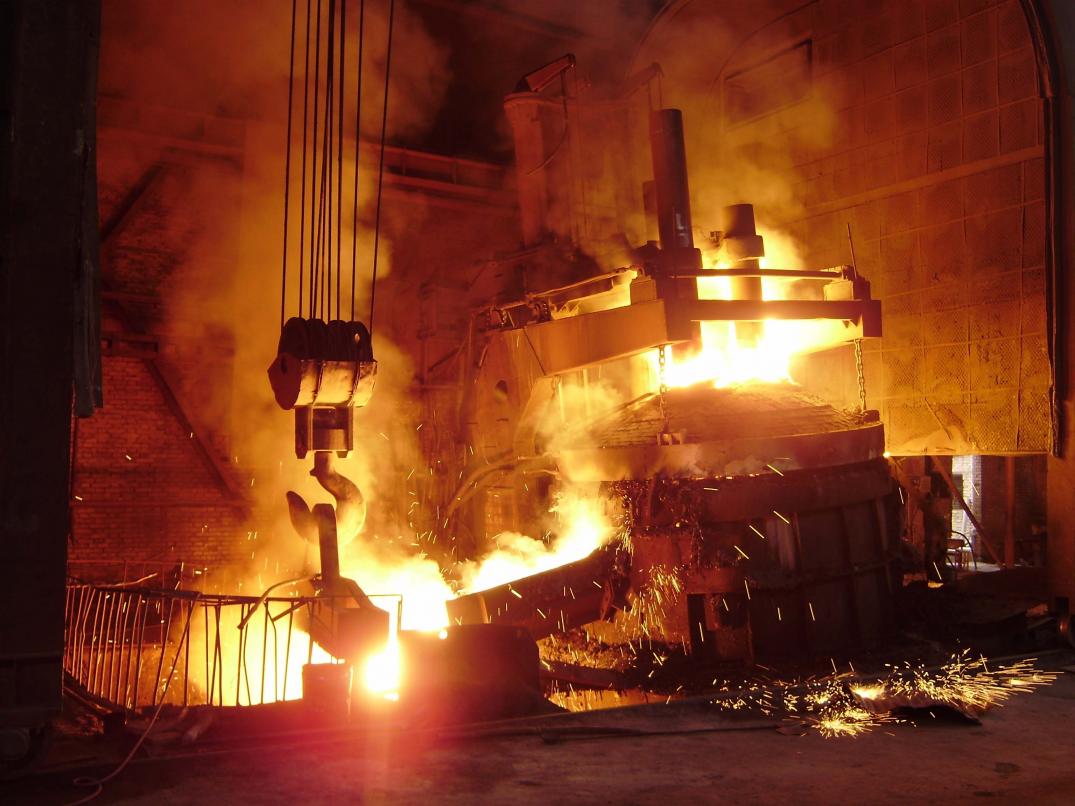Iran's steel sector is expected to grow over the next few years, as the government targets self-sufficiency in its metals sector. The country is the largest steel producer in the Middle East and its Comprehensive Steel Plan, announced in 2013, plans to raise steelmaking capacity from 20 million tons per annum in 2012 to 55 mtpa by 2025.
This would place Iran comfortably among the 10 biggest steel producing countries, lifting it from its current placing of 15, according to a report by Business Monitor International.
Iran exported an average of 1.35 million tons of steel in 2012 and 2013, according to a presentation by Iran's top steelmaker, Mobarakeh Steel. The Comprehensive Steel Plan appears to be forging ahead successfully with the country's output estimated by the World Steel Association to have risen by 15% year-on-year during the first two months of 2015.
BMI forecasts Iranian production to grow by 7.5% y-o-y in 2015 to 17.56 million tons. Growth is set to average 5.5% a year, over the next five years to reach 21.32 mtpa by 2019.
> Challenges to Growth
Despite considerable domestic production capacity, Iran remains highly dependent on steel imports to meet its consumption needs, and is currently estimated to source around 10 million tons of steel each year from neighboring states, including China and Turkey. Meanwhile, growth in steel products has slowed markedly, with crude steel capacities unable to sufficiently supply downstream industries and therefore exacerbating dependence on imported supplies.
A further complication for the sector is the intense price competition domestic steel producers currently face from Chinese suppliers. China's crude steel exports are estimated to have grown by 50.5% in 2014 to a record 94 million tons, prompting Iran to raise the tariffs on steel imports.
In March 2015, the government announced an increase in duties on certain steel imports from 10% to 20%, a move described by Keyvan Ja'fari Tehrani, head of international affairs at the Iranian Iron Ore Producers and Exporters Association, as "a response to 'dumping' by China, Russia and Turkey".
> Fragmented Steel Sector
BMI refers to the fragmented nature of Iran's steel sector as a major impediment to meeting the 2025 production target: Production is currently dominated by Mobarakeh Steel Company, the country's largest mill and also the biggest in the Middle East with a capacity of 7.2 million tons per year. The country's production capacity is otherwise relatively undeveloped by global standards with a number of private steel plants scattered across the country. Majority of these plants are small, with a capacity of 100,000 tons or under.
Mobarakeh Steel Company represents around 47% of the market, followed by Khuzestan Steel Company (23%), Esfahan Steel Company (20%) and the Iranian National Steel Industries Group (10%). Mobarakeh Steel dominates exports and is heavily exposed to eternal markets, while Esfahan Steel Company and Iranian National Steel Industries are oriented toward domestic markets.
> Infrastructure a Major Impediment
Lack of sufficient investment in infrastructure and technology is seen as another major impediment to achieving the output levels touted by the government. The report points out that due to poor transport links in the country, it often remains more profitable to import steel products than to transport them internally. Iran has seen a high level of import growth since 1994, when domestic supply first outstripped demand.
At present, China is the only major power with an interest in Iran's steel sector, with Beijing keen to strengthen ties with Iran which offers a potential pathway for Chinese exports to Europe. These plans include an offer by the Chinese government to build a new freight rail line in Iran. The freight line is aimed at allowing continuous rail transport of goods from China, through the Middle East, to Europe.
In return, China is expected to open credit lines between its banks and steel projects in Iranian provinces. The head of Iranian Mines and Mining Industries Development, Mehdi Karbasian, has held discussions with China Public Insurance Company, MCC Group and MCC CERI over pending financial issues of the projects. Karbasian was cited in early 2015 as describing the progress as 'slow', before claiming that with the removal of bottlenecks, the provincial steel projects should become operational within the next three years.


